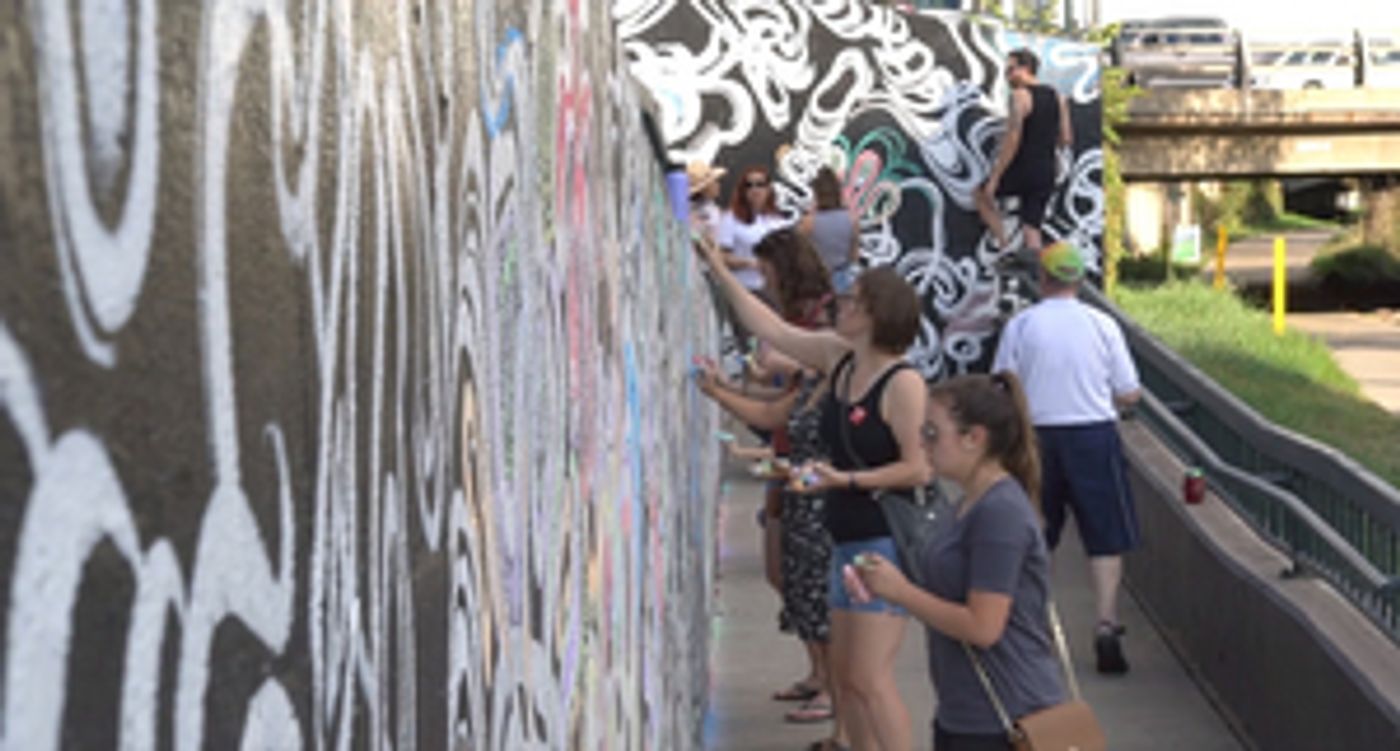Denver Arts & Venues Announces 2021-2022 P.S. You Are Here Grantees
Proposed 2021-2022 projects range from marketplaces to edible artscapes to painted planters and utility boxes representing Indigenous and Chicano history.

Denver Arts & Venues has announced the 2021-2022 P.S. You Are Here grantees.
In 2014, Arts & Venues launched P.S. You Are Here (PSYAH), a grant program supporting neighborhood-based community-led projects that activate outdoor public spaces, build civic engagement, honor heritage, beautify neighborhoods, and enrich communities. In response to the pandemic, PSYAH funds were diverted in 2020 to several grant programs supporting artists and organizations impacted financially by COVID-19. In 2021, however, Arts & Venues reinstated the PSYAH grant program and has selected 14 grantees for a total of $120,000 in grants of up to $10,000 each.
"After pivoting funding in 2020 towards art and cultural relief and recovery funding, we are thrilled to be able to bring this grant program back," said Denver Arts & Venues Cultural Affairs Program Manager, Lisa Gedgaudas. "This year we are providing funding to 14 organizations and artists, the largest group of grantees and the largest amount of funding since the program started in 2014. These community-driven beautification projects generate creative urban design solutions and localized arts and cultural experiences."
Proposed 2021-2022 projects range from marketplaces to edible artscapes to painted planters and utility boxes representing Indigenous and Chicano history, and will engage residents and visitors in neighborhoods across the city.
"These small grants provide opportunities for neighborhoods to bring art into our parks, alleys, streets and sidewalks to better connect neighbors and community members through collaboration and participation," said Denver Public Art Program Administrator, Brendan Picker. "These incremental improvements can be refined and supported over the years to help us continue to strengthen our public spaces and our sense of community."
Selected projects include:
- Bicycle Colorado DBA Denver Streets Partnership, Colfax Viaduct Activation: a series of community-managed, international marketplaces featuring local entrepreneurs and businesses, paired with culturally appropriate placemaking and public art beneath the Colfax viaduct, adjacent to the Broncos Stadium.
- RedLine Contemporary Art Center, Living Land Acknowledgments: a garden in Five Points with a collaborative community-responsive artwork that actively acknowledges the Indigenous ancestral land of Five Points in an ongoing conversation to fortify residents' sense of belonging, agency and place-keeping.
- Rocky Mountain School of Expeditionary Learning, Better Together CoLab: with the partnership of local experts in the trades, student design teams will engage in a design process to create a piece of interactive art in Cook Park Urban Garden.
- Becky Wareing Steele, ¿Qué significa para ti la comunidad? (What does community mean to you?): a series of diorama-based installations enclosed in Retablo (Latin folk art) inspired cabinets along Friendship Alley near Munroe Elementary School.
- Art Students League of Denver, The Flagpole Project, 350 years of Denver: a collection of flags located at Denver Public Library branches, city parks, and North, South, East and West public high schools, inspired by 350 years of Denver and Colorado history.
- Montbello Organizing Committee, Montbello Memory Mapping: podcast recordings from long-term Montbello residents which will live both online in an interactive map of the Montbello community and physically around the neighborhood in the form of art pieces displaying QR codes.
- Markus Puskar, Denver's Mural Coloring Book: a black and white mural at a Denver Recreation Center that will serve as a life-sized "coloring book" for the community to color in together with chalk.
- Arts Street at Youth Employment Academy, Edible Artscapes Youth Initiative: a regenerative garden installation at 10th Avenue and Osage Street with integrated art elements designed by young people, including mosaic, 3D sculpture, painted components, and/or large-scale textile flags.
- Edica Pacha, UndocuAmerica: large-scale photographs with QR codes linking to monologues created by undocumented immigrants in conjunction with Motus Theatre, telling the stories of their journeys.
- Denver's Arts District on Santa Fe, Powered by Heritage: Utility and Planter Box Art Representing Chicano and Indigenous History: the project will engage local residents, business owners and artists to determine the Indigenous and Chicano stories to be told on the utility boxes and plant boxes along Santa Fe Drive.
- The Trust for Public Land, 303 ArtWay Community Art: the 303 ArtWay team, consisting of The Trust for Public Land, Urban Land Conservancy and Radian Inc., will work with PlatteForum to host creative visioning workshops with neighborhood youth and recruit local artists and community members to create multiple public art installations along the 303 ArtWay.
- Monarch Montessori, Montbello Inspires: three-dimensional art along Peoria Street between 49th and 47th avenues, which will include stand-alone metal letters that spell out an inspirational phrase in both English and Spanish.
- Genevieve Waller, Stars and Precious Gems: Celebrating the LGBTQIA+ History of the University of Denver: a display of printed paper panels featuring photos of individuals, informational texts and various designs, garlands made of rope and sculptures made of papier-mâché.
- Rafael Herrera, Ruby Hill Mural Project: a new mural on the floodway wall along the Sanderson gulch trail.
More detailed information about the projects can be found online.

Videos

